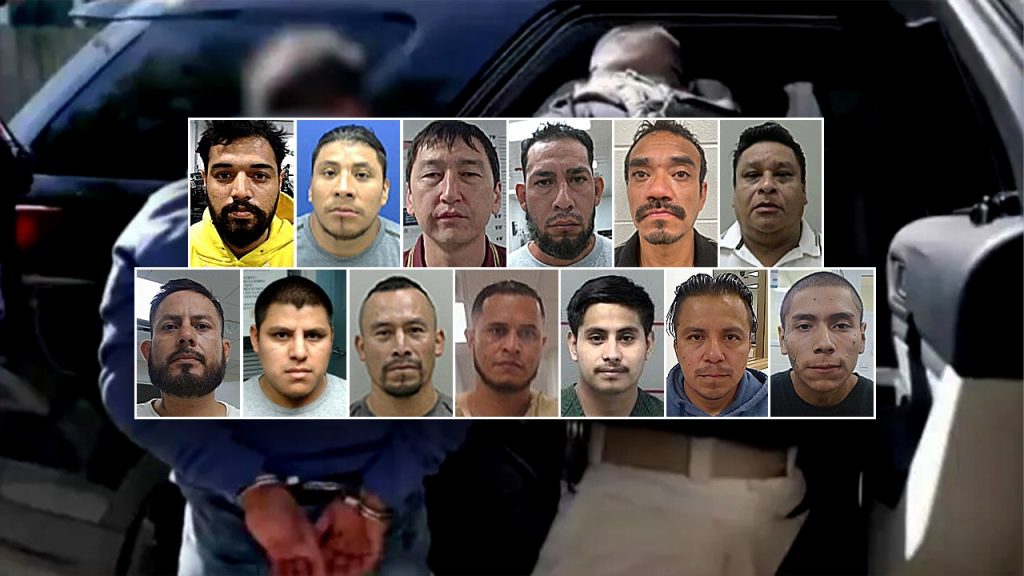ICE Arrests Dangerous Criminal Offenders in Chicago Sanctuary City
In a significant law enforcement operation called “Operation Midway Blitz,” U.S. Immigration and Customs Enforcement (ICE) recently conducted a series of arrests targeting criminal illegal immigrants in Chicago. The operation specifically focused on individuals accused of serious crimes including child sexual assault, rape, armed robbery, and domestic battery. This enforcement action was dedicated to the memory of Katie Abraham, who lost her life in a drunk-driving hit-and-run accident allegedly caused by Julio Cucul-Bol, an undocumented immigrant in Illinois. The operation highlights the ongoing tension between federal immigration enforcement and local sanctuary policies that limit cooperation with federal authorities.
Department of Homeland Security Assistant Secretary Tricia McLaughlin emphasized the severity of the crimes committed by those arrested, stating that ICE had apprehended “pedophiles, rapists, abusers, armed robbers, and other violent thugs” in Chicago. Her comments directly criticized Illinois Governor Pritzker and Chicago Mayor Johnson, suggesting that their sanctuary policies protect criminal offenders at the expense of law-abiding citizens. McLaughlin further claimed that such policies have made Illinois a destination for criminals seeking to avoid immigration enforcement, allowing them to “roam free and terrorize innocent Americans without consequence.” This perspective represents the federal administration’s stance that sanctuary jurisdictions create public safety risks by limiting cooperation with immigration authorities.
The operation reflects a broader policy shift under the current administration, with McLaughlin articulating a clear message from President Trump and Secretary Noem: “no city is a safe haven for criminal illegal aliens.” This declaration signals an intensified approach to immigration enforcement, particularly targeting those with criminal records. The stark warning that authorities will “hunt you down, arrest you, deport you, and you will never return” demonstrates a tough enforcement stance intended to deter illegal immigration and criminal activity among undocumented populations. This represents a continuation and potential expansion of stricter immigration policies from previous Trump administration approaches.
The Department of Homeland Security provided mugshots of what they described as “some of the worst of the worst offenders” arrested during the operation. While specific details about individual cases were limited in the original reporting, the focus on serious criminal offenders suggests a prioritization strategy targeting those deemed most dangerous to public safety. This approach aligns with statements from officials like Tom Homan, who has previously put sanctuary cities “on notice” regarding immigration enforcement actions. The emphasis on violent and sexual offenders appears designed to garner public support for enhanced enforcement by highlighting cases most likely to generate concern among citizens.
This operation occurs against the backdrop of ongoing national debates about immigration policy, sanctuary jurisdictions, and the proper balance between federal and local authority. Sanctuary policies, which limit local law enforcement cooperation with federal immigration authorities, were originally implemented to encourage undocumented immigrants to report crimes and cooperate with police without fear of deportation. Proponents argue these policies enhance community safety by building trust between immigrant communities and local law enforcement. Critics, including the current administration, contend they shield dangerous criminals from deportation and undermine immigration laws. This fundamental disagreement forms the core of tensions between federal authorities and cities like Chicago that maintain sanctuary policies.
The Department of Homeland Security has indicated that such enforcement operations will continue, with plans to “surge ICE resources in the city” while coordinating with other federal partners from across DHS and the Department of Justice. This suggests a sustained, multi-agency approach to immigration enforcement in sanctuary jurisdictions, potentially signaling increased federal presence in cities that limit cooperation with immigration authorities. The operation demonstrates the administration’s commitment to enforcing immigration laws even in jurisdictions that have policies limiting cooperation with federal immigration authorities. As these operations continue, they will likely further intensify the national debate around immigration enforcement, sanctuary policies, and the relationship between federal and local authorities in managing public safety and immigration matters.


